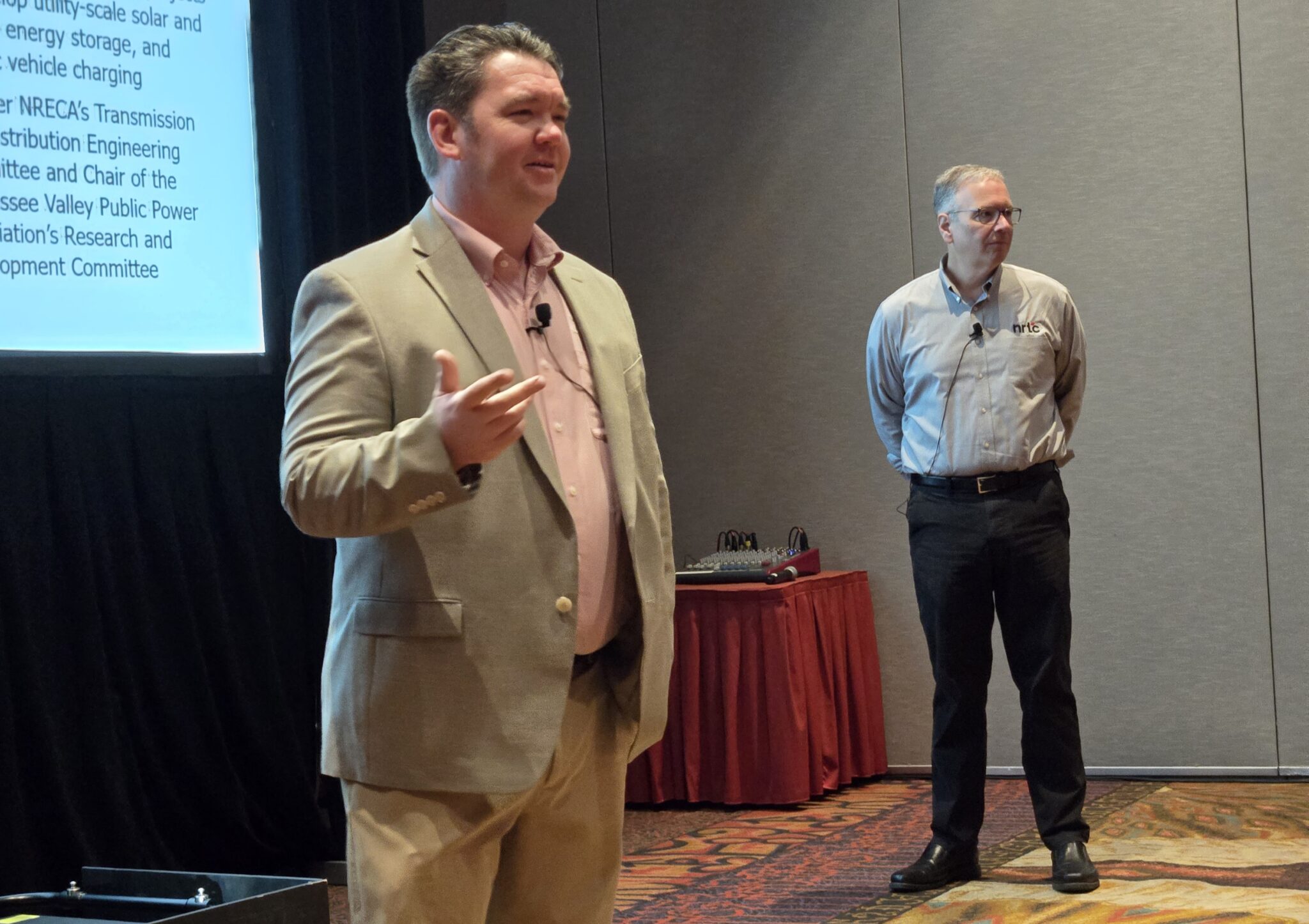A Strategic Mix of Communications Technologies Enables Multiple Use Cases
Randy Sukow
|

The demand for electricity and the rapid advancement of technology has sparked a rapid increase in the number of use cases an electric cooperative might deploy. Communications is what enables all of those use cases and it is the cooperative’s task to look at the many options and determine which technologies will ensure reliable, resilient, secure and cost-effective solutions.
“We need to have good communications. Some of them are going to be low latency. Some will be high-speed and it’s probably going to be a mix of communications technologies,” said Joe Walsh, NRTC’s VP, Smart Grid Advisory and Networks, during a Monday morning TechAdvantage session San Antonio. Walsh and Justin McCann, VP, Engineering for West Kentucky Rural Electric Cooperative (pictured left above) reviewed the many use cases and technologies and offered issues for cooperatives to consider.
“The whole electric industry is moving away from single-purpose … I call them ‘unitasker’ … networks into consolidated, standards-based networks that do different things,” Walsh said.
Use cases range from push-to-talk voice to physical security to smart grid device monitoring and control and autonomous drones. Many co-ops already are employing many use cases, sometimes using several different proprietary communications technologies. A look at the communications alternatives could cut down on proprietary eqyuipment and software and save money. Walsh and McCann mainly focused on three communications techs.
- Microwave links often make sense when communicating from static locations, such as substations, that transmit over short, line-of-sight distances. With data rates of 400 Mbps and low latency, microwave signals can meet the needs of many smart grid applications and serve as a low-cost back-up for fiber networks.
- Fiber optics is the high-speed, low-latency champion that supports the most potential use cases, from home broadband and community capacity leasing in addition to utility needs.
- LTE, whether commercial or private wireless networks, have strong built-in security features, reliability and are faster than mesh networks and other alternatives. LTE Cat-M is ideal for low-powered Internet of Things (IoT) uses that reach a high number of points, such as electric meters and network sensors.
“We had some tornados recently and one of those tornados cut our system in half,” McCann said. Many of West Kentucky REC systems were out for a week. “But what wasn’t down was our cellular towers. We’ve been using LTE backhaul for some of our [AMI] towers since 2018 … our fiber was down but those towers came back up,” he said.
Working with NRTC, West Kentucky REC conducted a nine-month private LTE trial on the 900 MHz band, which produced good signal propagation. “It was, from a proof of concept, a fantastic test,” McCann said. “It worked very well. We used it for fixed wireless, trunked radios, SCADA, and handsets.”
NRTC provided a live demonstration of multiple-use private LTE later Monday afternoon. Many co-ops may be familiar with some of the demonstration’s devices. The photo on the left shows the demo at the NRTC’s TechAdvantage booth with an LTE radio on a pole (lower right). The transmitting antenna is mounted on a higher pole directly behind the radio (right-hand corner).
The photo, top right, provides a closer look at the devices on the table. The two devices on the left are LTE routers, which receive signals from several sources and distribute them throughout the LTE network. The device on the left from New Zealand company 4RF has ports for both ethernet and fiber cable. The other router from BEC Technologies of Richardson, TX, includes dual gigabit ethernet interfaces. The photo also shows a smartphone and push-to-talk handsets operating in the demo.
NRTC collaborated with wireless equipment companies at the TechAdvantage exhibit floor to complete the demo. The photo at bottom right is the BEC booth, which displayed a distribution automation 5G radio that was part of the demo. In the background above the radio is an antenna receiving the LTE signal.
The LTE demonstration will continue through TechAdvantage’s close on Wednesday morning.

